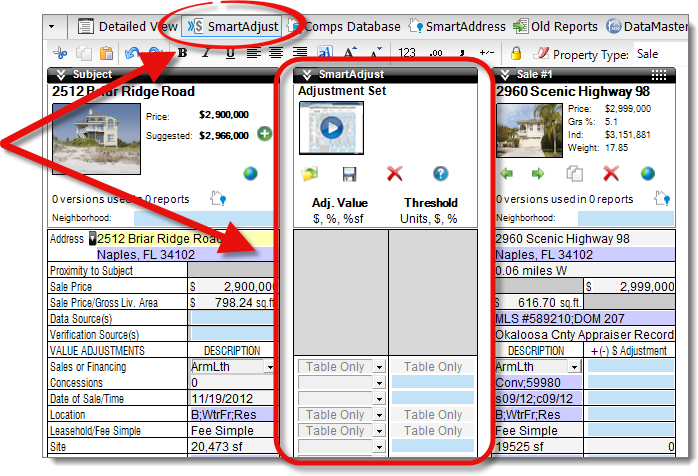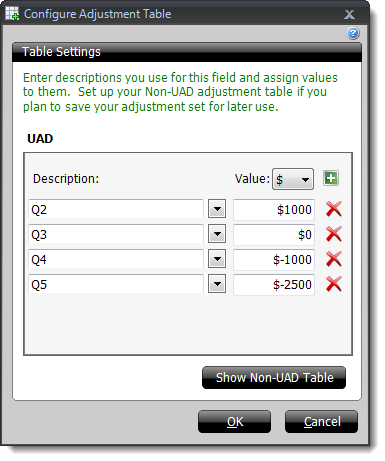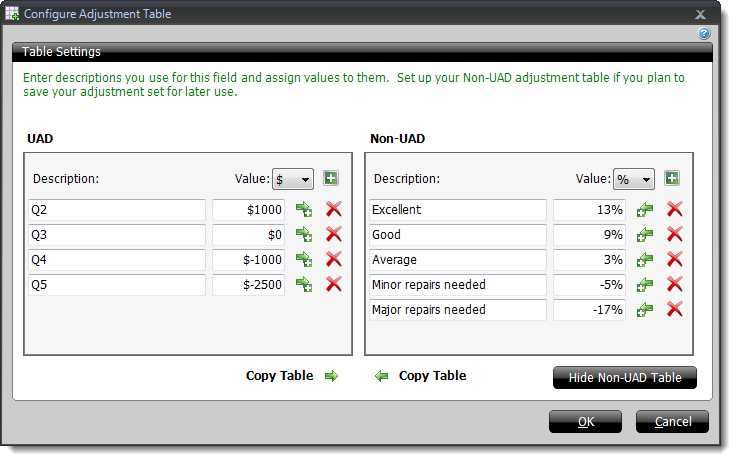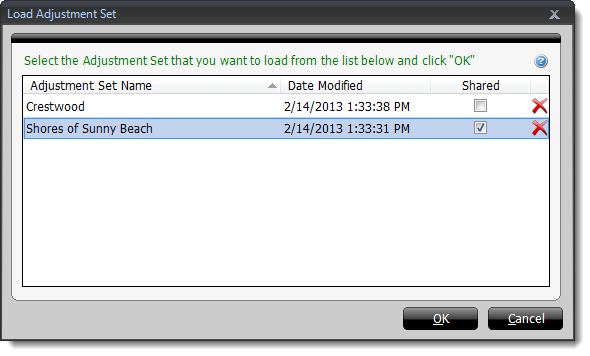
SmartAdjust is the only adjuster that handles both numeric and non‑numeric adjustments, and does it for both UAD and non‑UAD reports in one consistent interface. SmartAdjust saves you time on every field in the grid — especially the compound UAD fields, like basement and bathrooms. SmartAdjust automatically breaks these out into separate line items for you to apply individual adjustment factors. So, for bathroom count you'll see one SmartAdjust sub‑line for the full baths, plus one for the half baths, and you can adjust your factors separately for each and the factors are applied to all comps simultaneously.
You can use percentages, percentage per square foot, and dollars, all in conjunction with SmartAdjust's unique text‑based lookup tables. What's a table? It's how you handle text stuff like "C1" versus "C2", tying adjustment factors to the different values automatically.
You can even load and save different "models" of SmartAdjust tables, factors, and Thresholds so that certain areas or different types of homes behave differently. A couple of clicks and you can load your "Waterfront luxury" adjustment factor set, or your "Rural acreage" set, and so on.
The Detailed View and SmartAdjust are a powerful combination when used together to make fine‑tuned adjustments in a UAD report.
To create a set of automatic adjustments:

Let's use the Quality of Construction field as an example. When you
configure the adjustment table, SmartAdjust automatically populates the "Q1"
through "Q6" descriptions when you have a UAD form in your report. You can
leave these how they are and enter values for each description, but let's say
you rarely use "Q1" or "Q6" for the descriptions. SmartAdjust allows you to
edit the descriptions, enter new descriptions by clicking the plus sign (  ) beside the value column, or
even delete a description and value by clicking the delete icon (
) beside the value column, or
even delete a description and value by clicking the delete icon (  ) beside that row. So, for
our example we have deleted the "Q1" and "Q6" descriptions, left the "Q3"
description with a value of "0", and then
entered adjustments for "Q2", "Q4", and "Q5".
) beside that row. So, for
our example we have deleted the "Q1" and "Q6" descriptions, left the "Q3"
description with a value of "0", and then
entered adjustments for "Q2", "Q4", and "Q5".

SmartAdjust also gives you the option of configuring parameters for both UAD, and non‑UAD forms. This is especially helpful when setting up adjustment templates because you can configure your adjustment tables for both form types, and then use the same adjustment template regardless of the form you're using. To configure your table settings for non‑UAD forms, click Show Non‑UAD Table on the lower‑right of the Configure Adjustment Table window, then enter your descriptions and values for Non‑UAD forms.

Applying an adjustment threshold in the Threshold column prevents automatic adjustments below a specified amount. Thresholds can be entered in Units, , or and essentially tells SmartAdjust that it must reach or exceed this amount before applying any adjustments.
Since the same set of adjustment rules may apply to future reports, save your adjustment rules as a template so that you can retrieve them later and apply them to another report. To save your adjustment rules:
 ) at the top of the
SmartAdjust column.
) at the top of the
SmartAdjust column.
As you continue writing new reports, some reports may be able to use previously saved adjustment templates. To load an adjustment template:

By using both Detailed View and SmartAdjust you have full control over your adjustments for numeric and non‑numeric fields like full bath and half bath. To use the Smart Adjust and Detailed View:

What about the calculations used by SmartAdjust? Here's the math we use for Adj. Value ( , , sf ):
For accurate adjustments, ensure the Effective Date is in the report, and each comparable has a Sale Price entered.